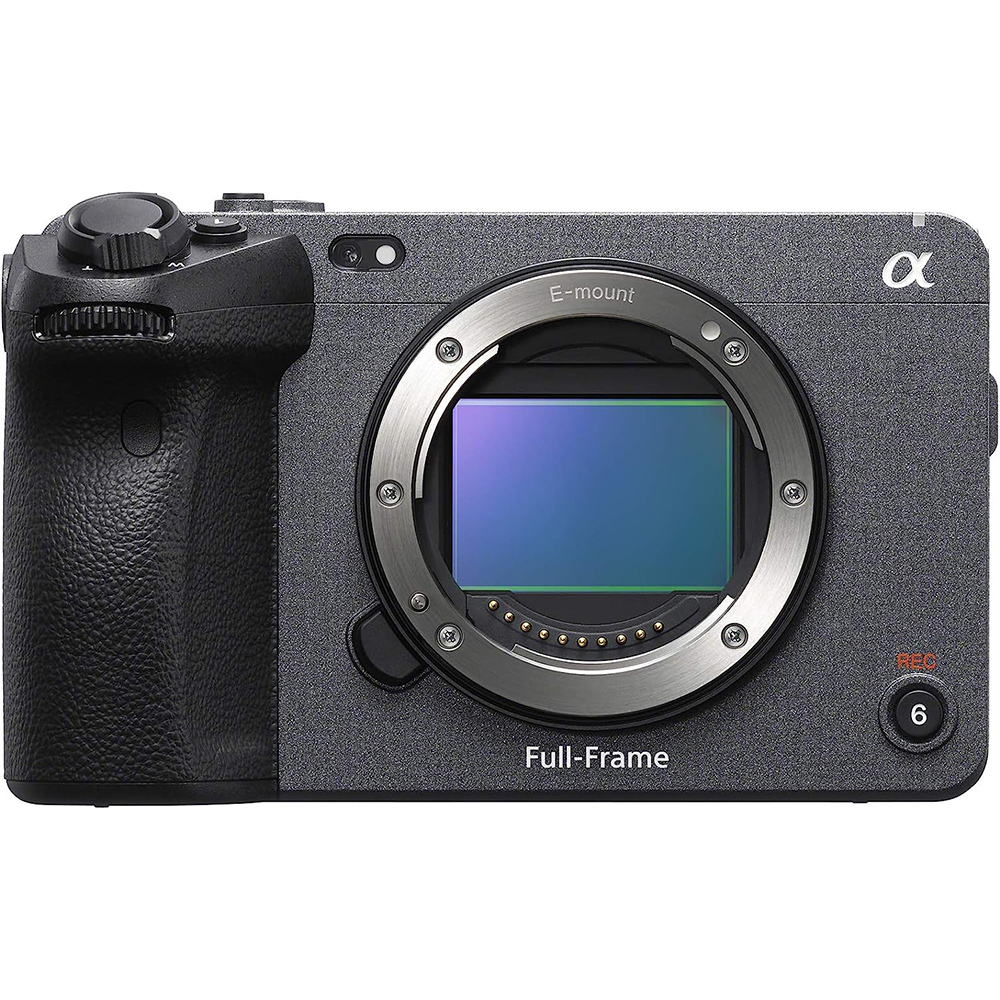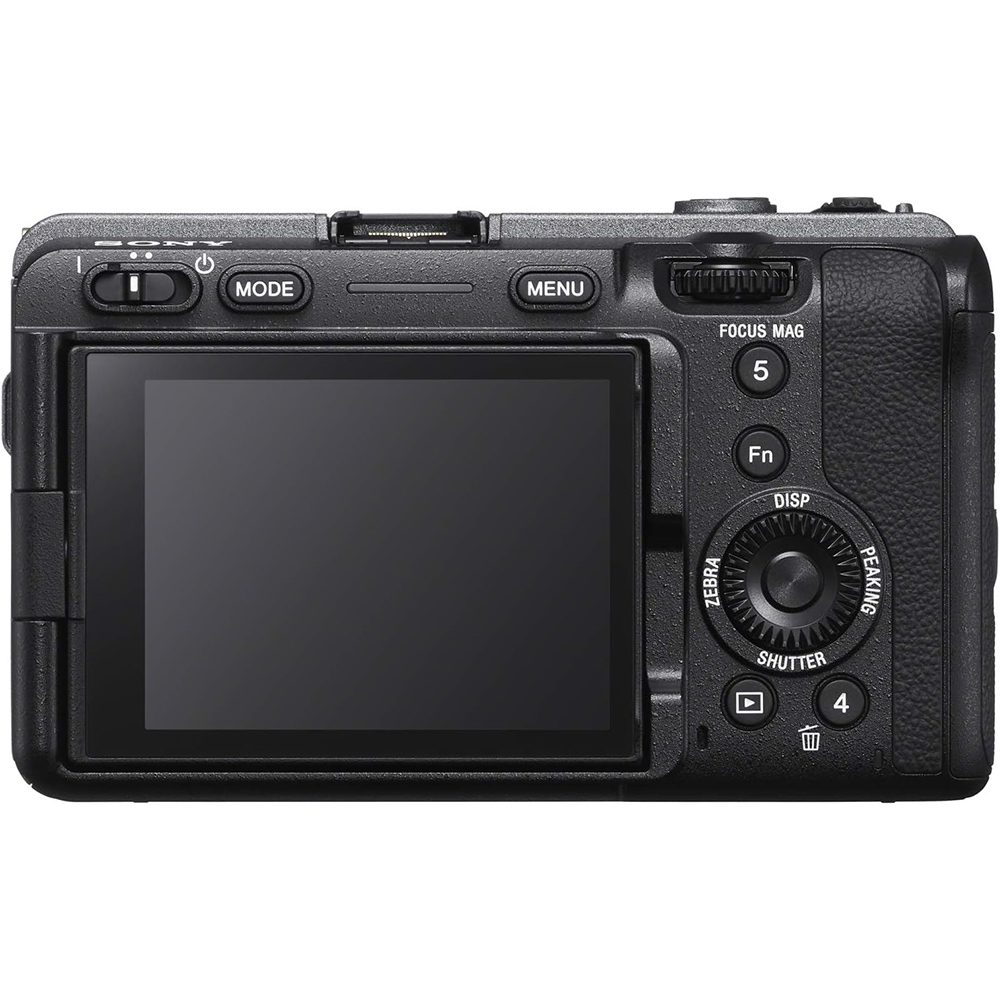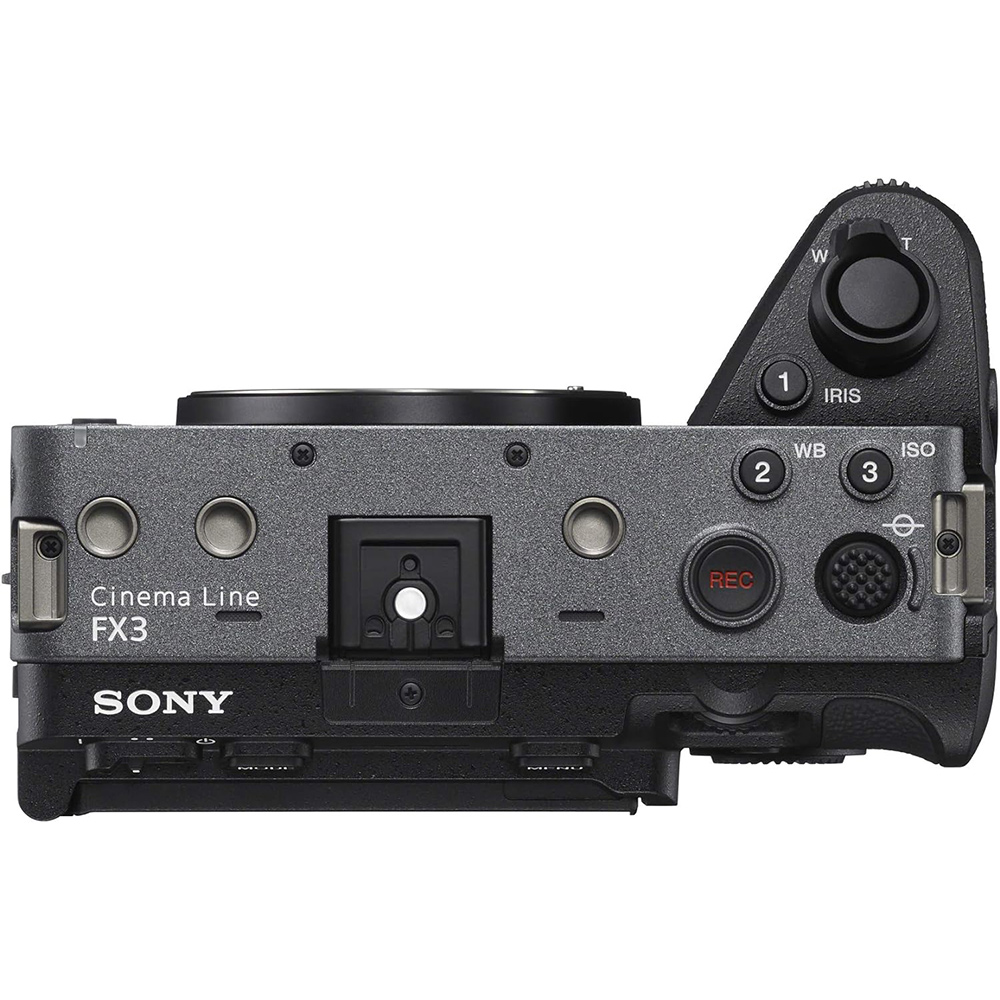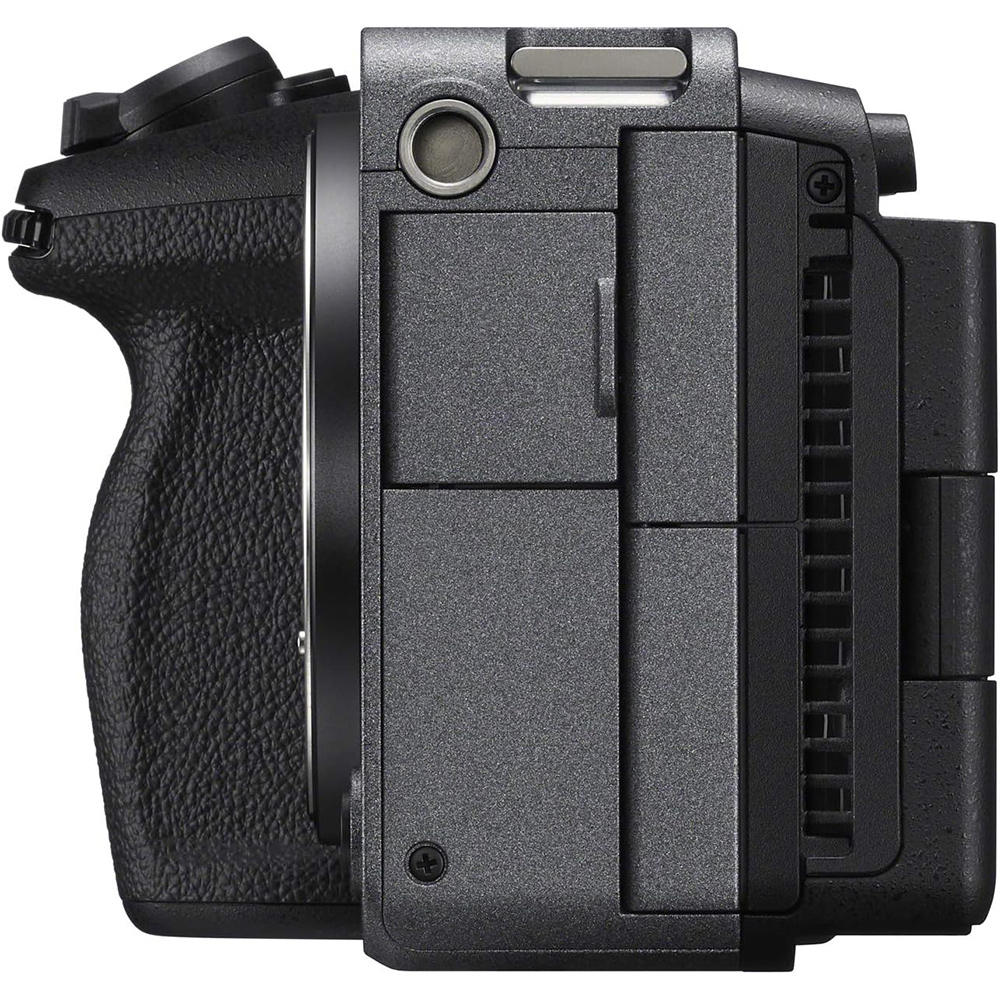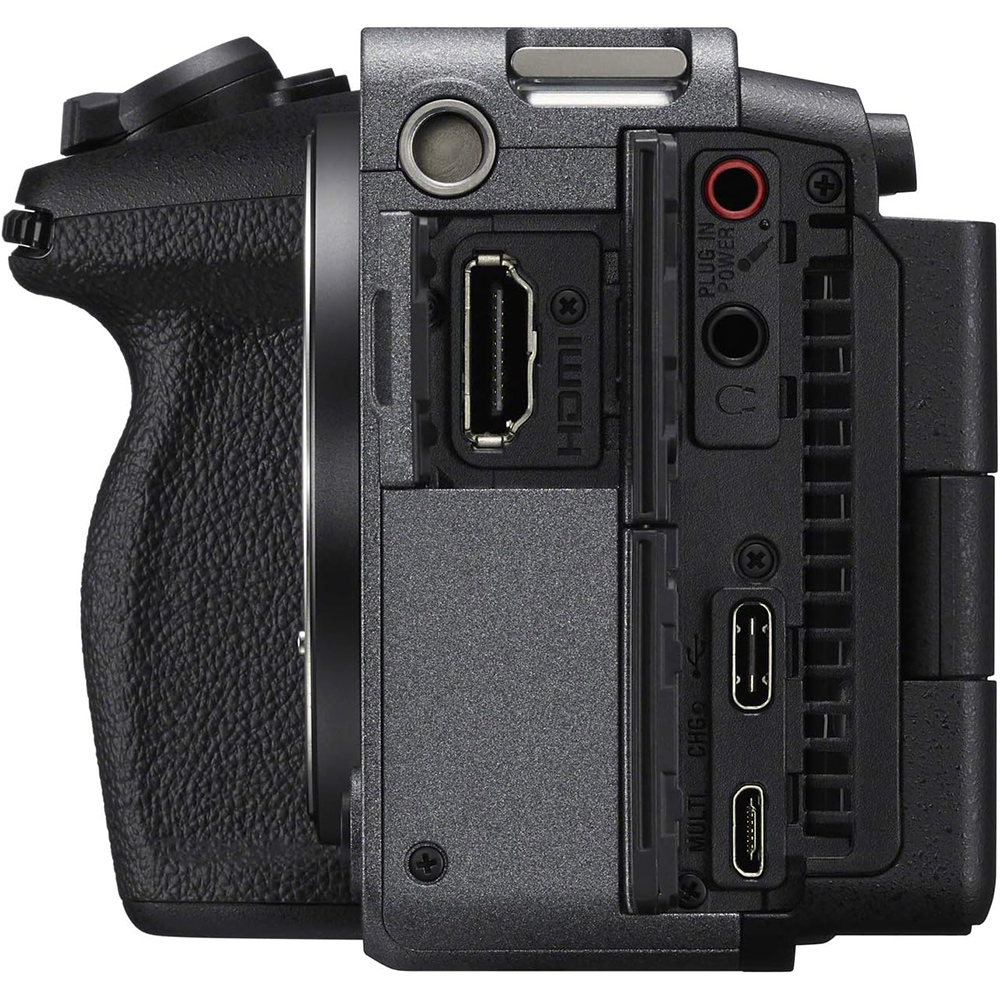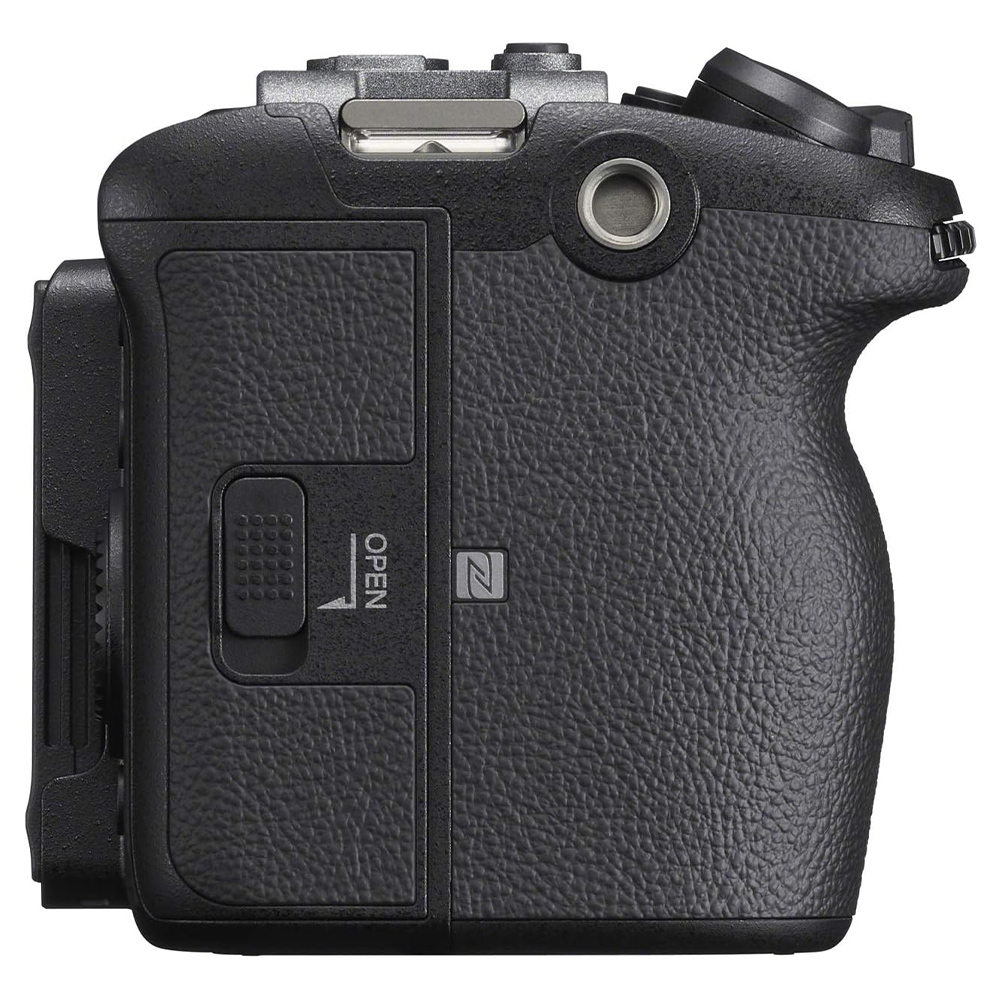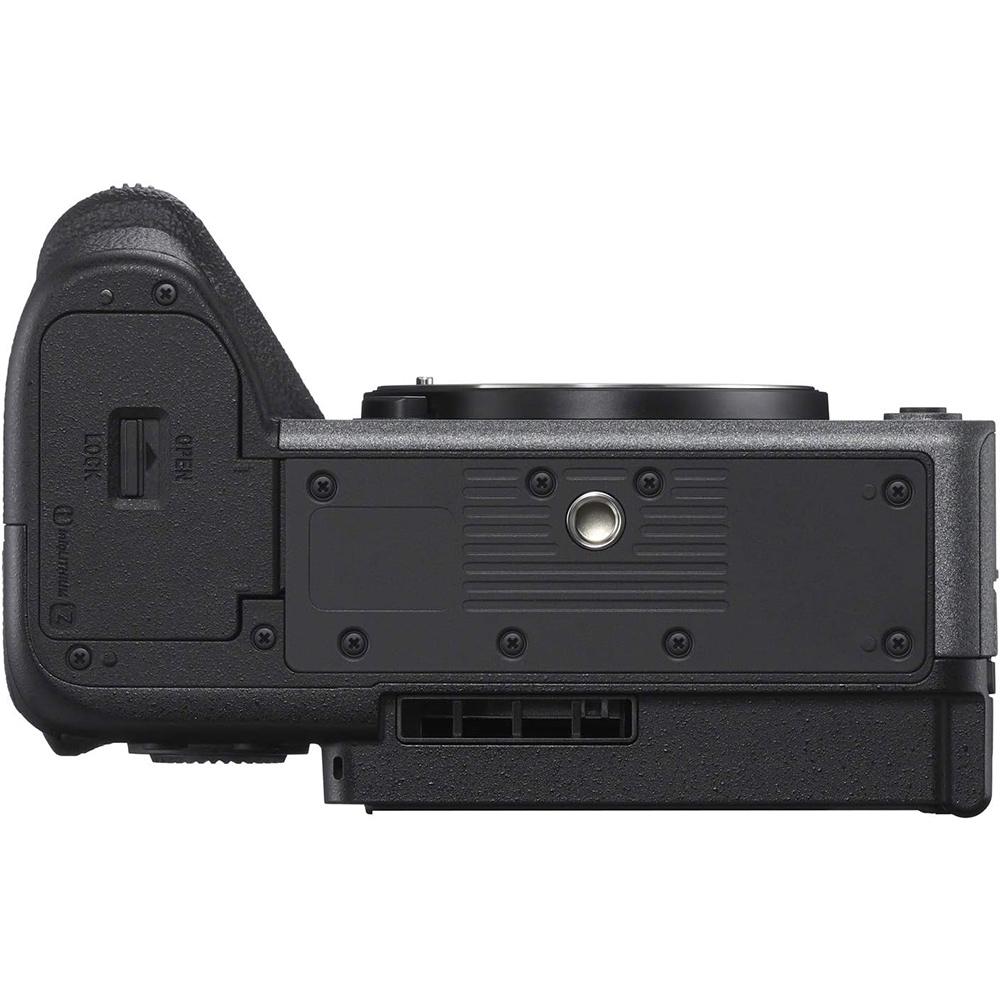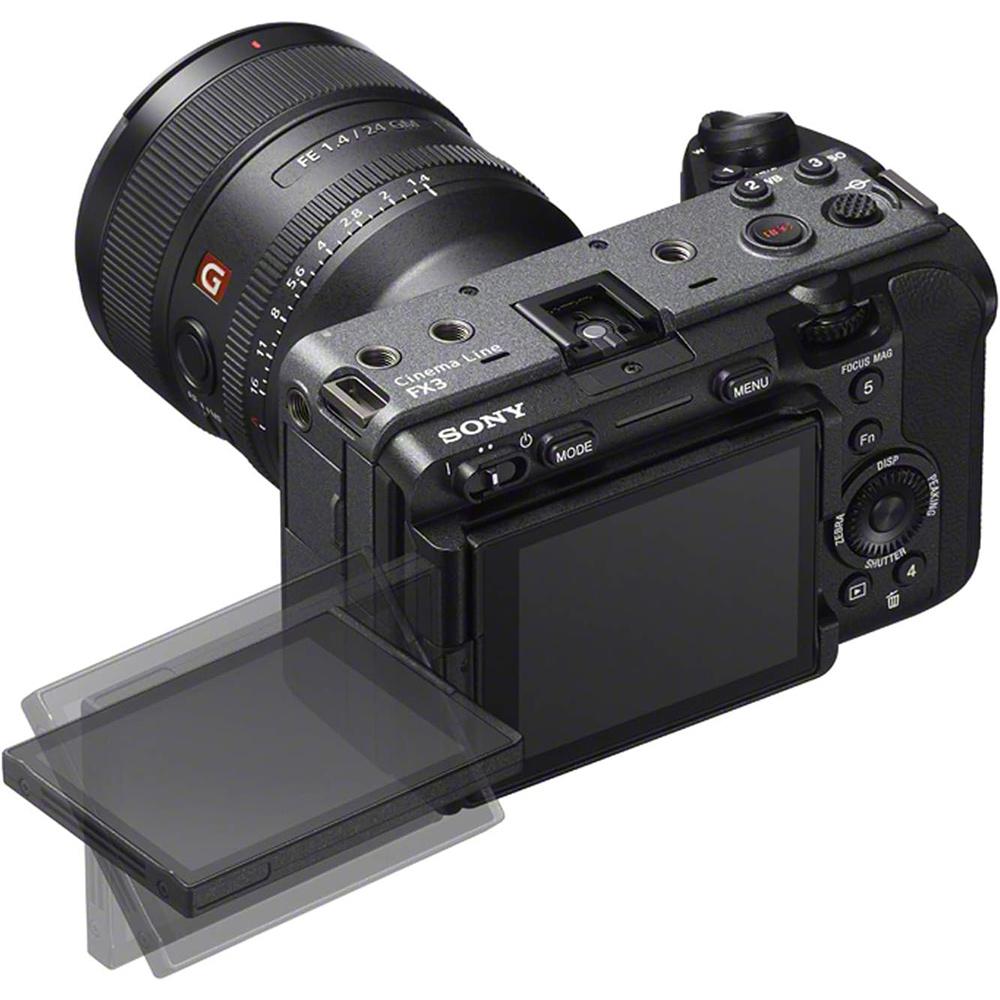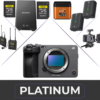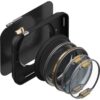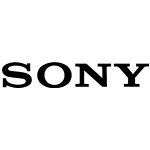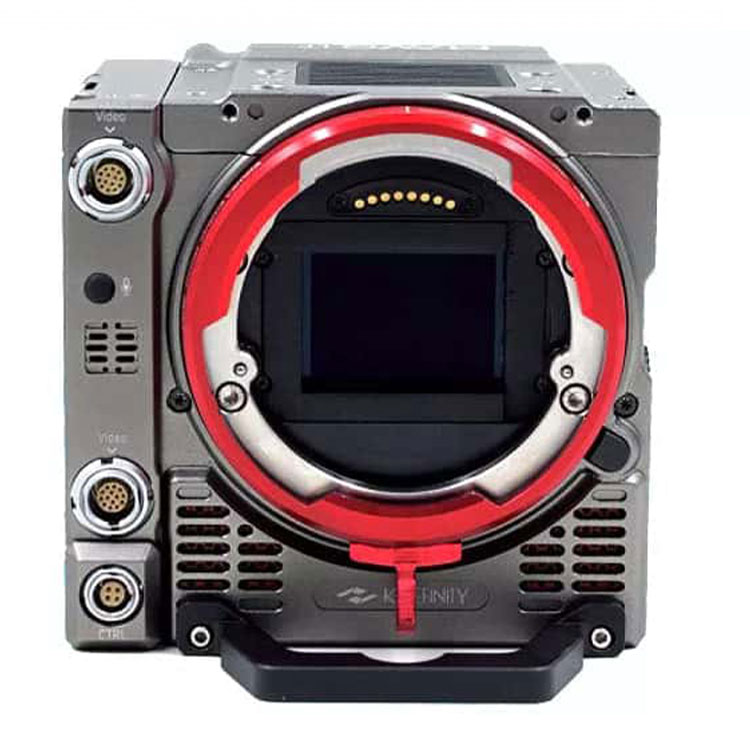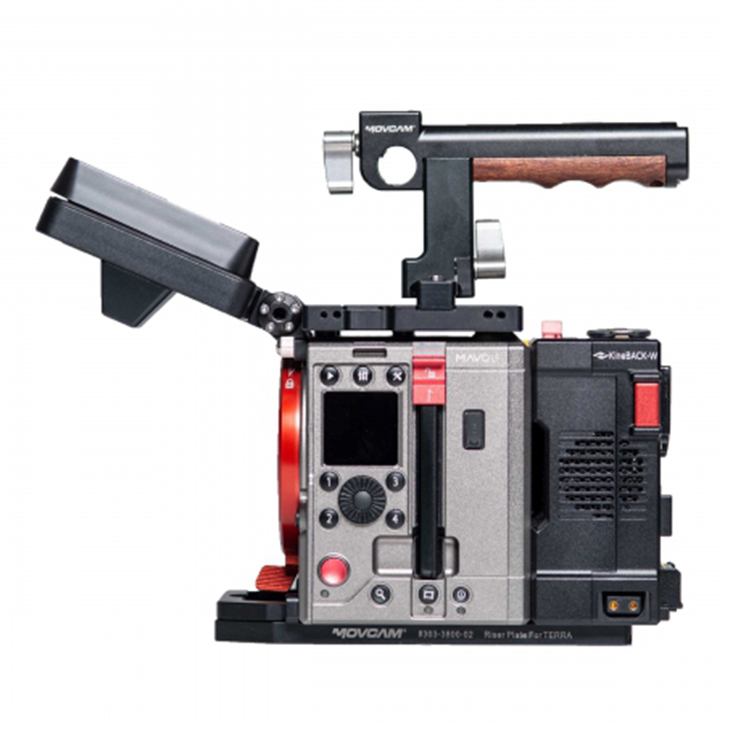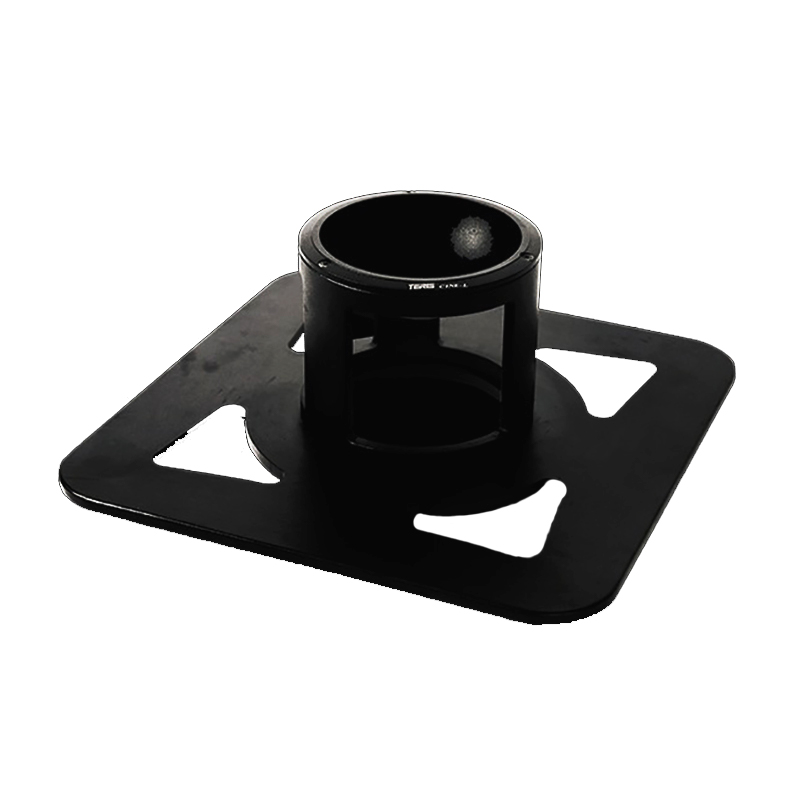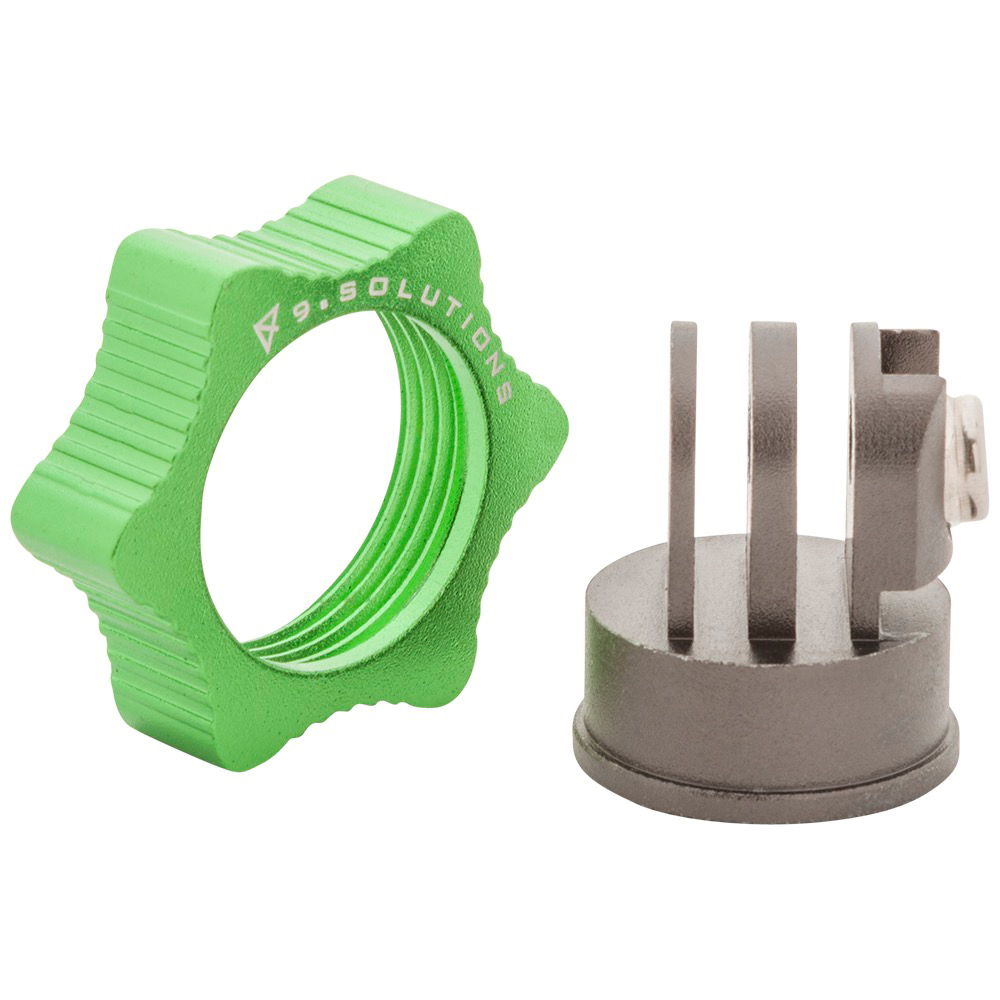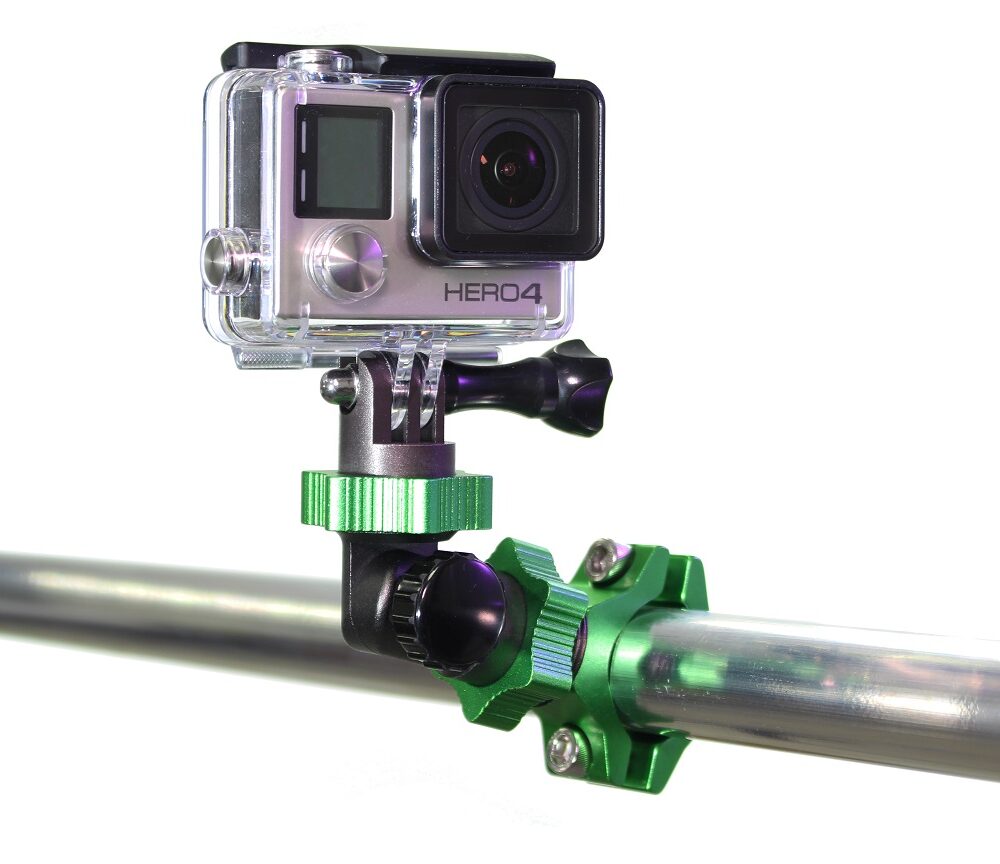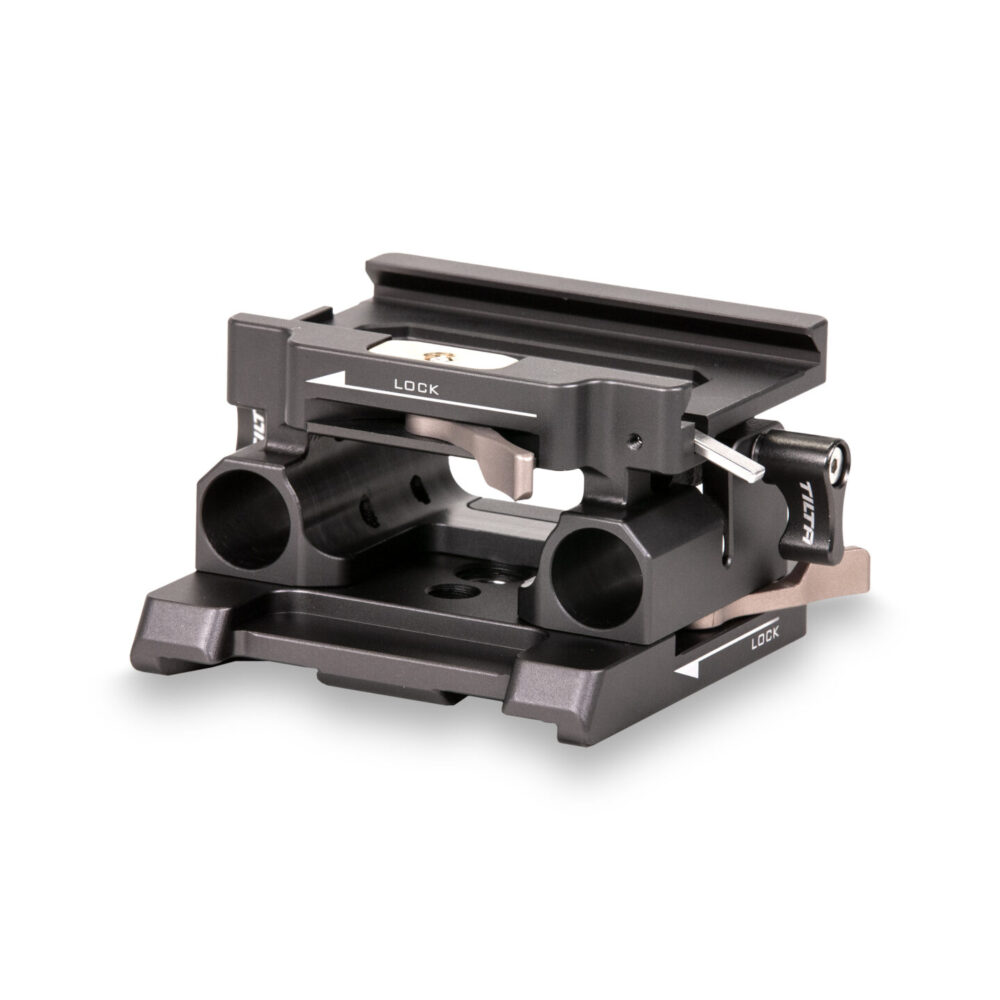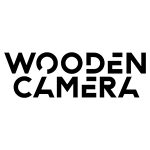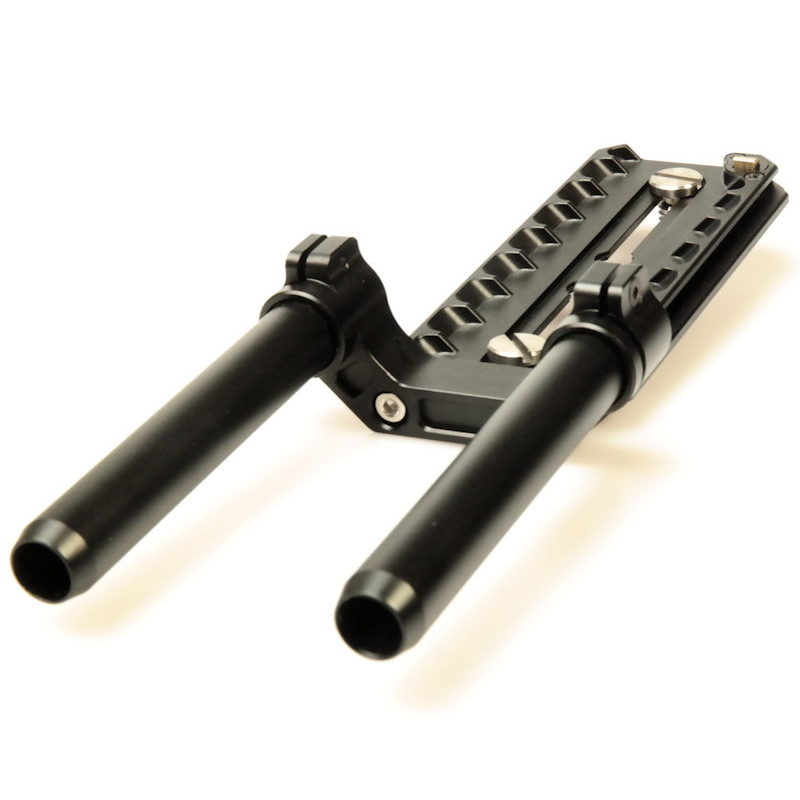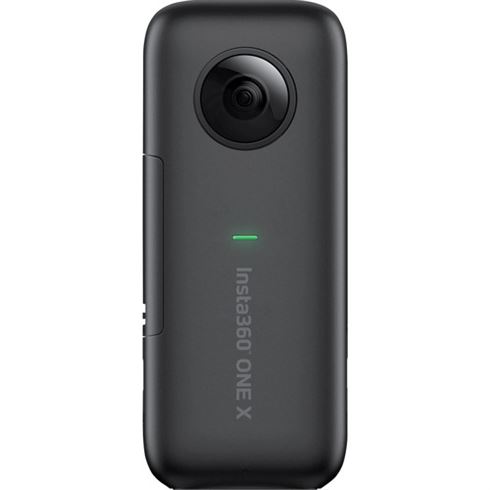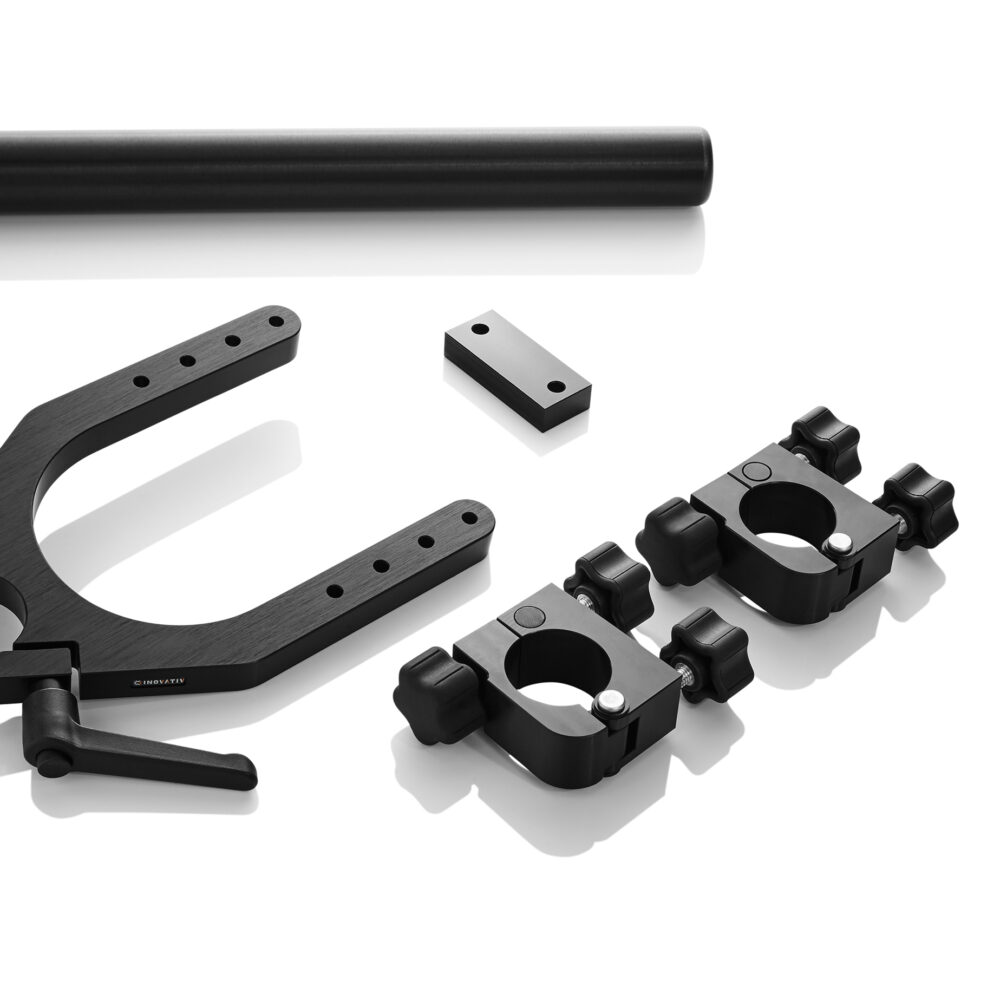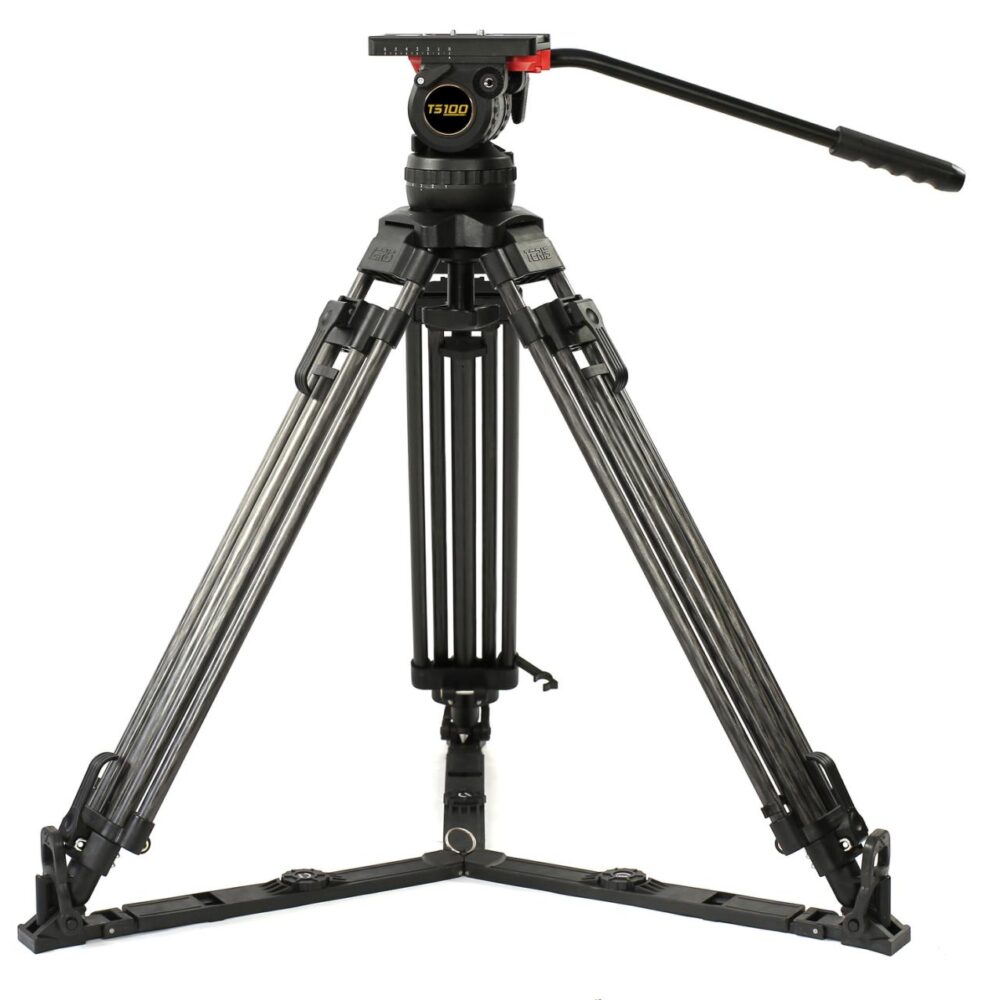Sony ILME-FX3 FX3 Full-Frame Cinema Camera
Designed for single-operator image capture yet offering multiple pro video functions, the FX3 Full-Frame Cinema Camera is Sony’s most compact addition to its Cinema Line. This camera melds the high-end video capture of the FX6 with the petite form of the a7S III familiar to so many mirrorless enthusiasts. Well positioned for use as a B-camera on FX6, FX9, or even VENICE productions, the FX3 also serves as a comfortable option for still photographers branching out into video capture.
The full-frame Sony FX3 employs a 12.1MP Exmor R BSI CMOS sensor and a BIONZ XR processor to capture up to UHD 4K video with the shallow depth of field that is signature to the full-frame format. An expanded ISO range of 80 to 409,600, over 15 stops of dynamic range, and limited rolling shutter effects further complement the FX3’s sensitive, nuanced image capture. Its lightweight, compact form is designed with multiple accessory threads to facilitate cage-free use, and it comes with a detachable, dual XLR/TRS adapter handle for pro audio capture. Operating features include an articulated, touchscreen LCD, multiple autofocus options, and 5-axis, in-camera image stabilization.
Optimized for cinematic expression
The FX3 features a 10.2MP Full-frame Backside-illuminated (BSI) Exmor R CMOS sensor that delivers sensitivity, speed and superior movie quality. The sensor features a color filter array that boosts color reproduction accuracy while delivering up to 15+ stops of dynamic range and drastically reduced noise for ultra-sharp and clean images with a fast readout speed that reduces rolling shutter. In addition, the Exmor R sensor features Sony’s acclaimed fast hybrid autofocus with 627 phase detection AF points and 89% coverage. The high sensitivity also allows it to autofocus in light as low as EV-6.
High-performance fast processing
The FX3 features the same BIONZ XR system architecture as the FX6, with high processing performance from image capture through all signal processing stages. User interface, network, and file management processing is distributed so that fast, stress-free control response is maintained regardless of real-time processing load. The engine also makes it possible to deliver high sensitivity and natural gradations, realistic color reproduction, low noise, and other image quality improvements as well as faster, more precise AF plus the ability to process the large amounts of data required for 4K 120p 10-bit 4:2:2 recording. It also features improved menu response and high-speed write to CFexpress Type A memory cards.
S-Cinetone for that expressive cinematic look
In response to a growing need for more expressive depth, the FX3, along with FX9 and FX6 Cinema Line cameras, allows users to easily create a cinematic look without post-production using S-Cinetone picture profile. Inspired by the color science used in Sony’s flagship VENICE camera, S-Cinetone delivers natural mid-tones, plus soft colors and gorgeous highlights that are essential to cinematic expression. S-Cinetone is the default for Picture Profile 11 (PP11) on the FX3.
Cage free design
An easily manageable compact body that doesn’t get in the way translates directly into increased workflow efficiency and shooting freedom for creators involved in video production. The FX3 is designed to eliminate the need for a camera cage, including six standard ¼”-20 UNC threaded mounting points to easily and securely attach compatible accessories such as external monitors, recorders, wireless microphones, or other add-ons. In addition, the supplied top handle with XLR interface securely attaches to the body via the Multi Interface Shoe without any special tools and provides three additional thread holes. Since no cage is required, the system size and weight is reduced making transporting easier and setup time quicker. The FX3 has everything a single operator needs for video production in a versatile, easy-to-use compact and lightweight package that can be expanded to meet growing needs.
Smallest Cinema Line camera for solo shooting
As the most compact model in the Cinema Line, the FX3 is not only the smallest and lightest, but it also features a design that eliminates the need for a cage while providing an XLR handle unit that maximizes handheld shooting flexibility and ideal for gimbal and drone-mounted work. It weighs just 1.576 lbs. (715 g), including battery and memory cards, and the body is only 5.11” x 3.33” x 3.06” (129.7 x 84.5 x 77.8mm) HxWxD. The camera grip has been carefully designed with professional creators to provide optimum flexibility, stability, and comfort for extended handheld shooting sessions.
Digital XLR on top handle, MI shoe and 3.5mm jack audio options
The FX3 offer a variety of audio input options to suit different workflows and professional requirements. The body incorporate a standard 3.5 mm mic. jack, Sony’s digital MI (Multi Interface) shoe for cable free connection with compatible MI shoe microphones and the XLR top handle which includes a 3.5mm mic jack and two balanced XLR/TRS audio inputs, enabling high quality audio to the FX3. With an optional XLR or TRS microphone connected, the XLR module on the handle takes care of the A/D (Analogue to Digital) conversion and DSP (Digital Signal Processing) and transfers the digital audio data directly to the camera for outstanding audio quality. Camera settings provide audio recording formats, including 4-channel 24-bit recording. Since the XLR adaptor is integrated into the handle and does not require any additional cables or batteries, it offers stress-free set up.
Astonishing low-light performance and 15+ stops dynamic range
The 10.2MP sensor is optimized for 4K with full-pixel readout and to make use of much larger individual pixels for maximum light gathering capabilities. The full-frame sensor offers more light gathering area than smaller super-35 sensors, while fewer pixels mean each individual pixel is larger than on higher pixel-count full-frame sensors resulting in astonishing low-light capabilities with a high signal-to-noise ratio. It has a Standard ISO range from 80 to 102,400, expandable to 40 to 409,600 for stills and 80 to 409,600 for movies. The FX3 also employs Sony’s industry-leading Exmor R backside-illuminated CMOS image sensor technology for additional low light gathering performance and to double the readout speed. Thanks to the high-sensitivity, Exmor R sensor and fast processing, the dynamic range for movies is an impressively wide 15+ stops.
High speed for slow motion
The FX3 offers several in-camera 4K recording modes to match your creative need and desired format. 4K resolution at up to 120 frames per second delivers extraordinarily smooth 5x (max.) slow-motion imagery. In addition to supporting 10-bit 4:2:2 recording, this feature can be used with efficient inter-frame (Long GOP) compression or high-quality intra-frame (All-I) compression. A maximum bit rate of 1200 Mbps (4:2:2 10-bit, H.264, All-I) delivers supreme image quality when directly replaying movies in slow or quick motion in the S&Q mode. Up to 10x slow motion with Full HD resolution is possible at 240 fps (24p recording), providing fresh perspectives on dynamic sports and other types of action.
Uninterrupted 4K 60p recording
Creators need more than just refined features and performance; they also need reliability and durability. Heat buildup from processing large volumes of data when recording high-bitrate (10-bit/16-bit), high-resolution 4K and high frame-rate (60p/120p) movie can plague other systems, but not the FX3. It combines a fan for active cooling in addition to the unique camera-wide passive heat dissipation structure – with effective heat dissipation resulting in uninterrupted 4K 60p recording without thermal shutdown. The newly developed fan provides high-efficiency cooling by drawing air into the camera via the bottom panel and exhausts via the side. Cooling modes include: Auto, Minimum (Quiet and slow speed), Off in Rec. (Max speed when not recording) and Always Off.
10-bit 4:2:2 video reaches new levels of realism
The FX3 offer several recording options to meet the needs of different content creators, including; 10-bit 4:2:2 XAVC S™ (MPEG-4 AVC/H.264 Long GOP) and XAVC S-I (MPEG-4 AVC/H.264 Intra) formats in either 4K (QFHD) or FHD as well as 10-bit 4:2:2 XAVC HS™ (MPEG-H HEVC/H.265), in 4K only. For even greater post production flexibility, up to 60p 4K (4264 x 2408) uncompressed 16-bit RAW format can be output to an external device via full-size HDMI Type-A jack from the FX3.
Efficient MPEG-H HEVC/H.265 (XAVC HS™) coding
In addition to Sony’s common XAVC S™ (MPEG-4 AVC/H.264) codec found on many models, the FS3 adds XAVC HS format recording using the MPEG-H HEVC/H.265 codec for approximately twice the efficiency of XAVC S. You can record more detailed 10-bit 4K video at higher bit rates while keeping data volume within a manageable range. Image quality is better than XAVC S at a comparable bit rate, and equal to XAVC S at lower bit rates. H.265 video can be recorded internally to SDXC or CFexpress Type A memory cards.
16-bit RAW output for movie
To answer the increasing demand for RAW recording, the FX3 is capable of 16-bit RAW output up to 4K 60p to an external device via full-size HDMI Type A, for applications that demand the highest quality and post-production flexibility provided by RAW output. Full-frame 4K (4264 x 2408) 16-bit image output is possible, with a choice of frame rates (60p/50p/30p/25p/24p). You can also output RAW video via HDMI while recording XAVC HS 4K, XAVC S 4K, or XAVC S-I 4K to internal card media. Proxy recording is available during RAW output.
Easy S-Log matching with professional camcorders
In many cinema workflows, the ability to match the color of footage from multiple cameras is essential. The FX3 includes S-Log2 and S-Log3 gamma curves, the latter emphasizing shadow to mid-tone gradations and making it possible to achieve a dynamic range of 15+ stops. Three color gamut settings are provided: S-Gamut, S-Gamut3, and S-Gamut3. Cine. The S-Gamut3 and S-Gamut3.Cine color gamut settings make it easy to match FX3 footage with that shot on professional camcorders equipped with S-Log3 gamma curve settings. Minimum ISO when shooting S-Log has been reduced to 640, and the 160 to 500 range of expanded ISO can be used as well. Sensitivity can be lowered by as much as 2 stops below the normal ISO range for extra-low-noise recording.
10-bit 4:2:2 HLG (Hybrid Log-Gamma)
The FX3 provides HLG (Hybrid Log-Gamma) high-dynamic-range picture profile that supports the wide-gamut BT.2020 color space for true-to-life imagery with detailed shadows and highlights, with no need for color grading. Video recorded with this picture profile can be directly played back on an HDR (HLG) compatible Sony TV. 10-bit recordings reproduce finer gradation and detail for extraordinary realism. Gamma can be selected from four presets: HLG (corresponding to IYU-R BT.2100), HLG1, HLG2, and HLG3. These gamma settings provide varying blends of dynamic range and noise performance, generally achieving wider dynamic range that still blends well with images from previous cameras.
10 in-camera Creative Looks
A selection of Creative Looks makes it easy to create interesting moods for stills and movies right in the camera. 10 Creative Looks are provided as presets with different combinations of color, color depth, brightness, contrast, sharpness, and more. The presets can be used as they are, or customized by the user. Customized Creative Looks can be stored as Custom Looks for later recall and use.
Fast Hybrid AF in all modes
The FX3 inherits AF performance from Sony’s FX9 and FX6 Cinema Line cameras, incorporating the highly acclaimed Fast Hybrid AF for movie shooting in all modes, including 4K 120p. The Exmor R sensor and powerful BIONZ XR processing engine make it possible to provide a high-density array of 627 selectable focal plane phase-detection AF points for high-speed autofocus tracking capability with the precision of contrast-detection AF to quickly lock onto subjects that move erratically or change speed suddenly and track them with tenacious reliability across 89% (approx.) of the imaging area (94% vertically and 95% horizontally). Focus can even be reliably maintained when the subject is briefly obscured or when shooting with a small aperture.
Tenacious Real-time AF Tracking
AI-based Real-time Tracking for autofocus makes solo shooting a breeze thanks to the new BIONZ XR processing engine and a new subject recognition algorithm that uses color, pattern (brightness), distance (depth), face and eye information to process spatial information in real time at high speed. The focus area will seamlessly change between face and eye to object tracking according to the condition of the subject.
Real-time Eye AF
Real-time Eye AF employs AI (artificial intelligence) to detect and process eye data and track the subject’s eye with unprecedented precision. The superior real-time data processing capability of the new BIONZ XR image processing engine ensures accurate, reliable detection even when faces are looking away at extreme angles. Real-time Eye AF is available in all recording modes, including 4K up to 120p. When the Touch Tracking feature is used, Real-time Eye AF is simultaneously initiated if the [Face/Eye Priority in AF] menu item is ON. In addition to automatic eye selection, it’s possible to manually preselect the subject’s right or left eye.
Intuitive touch AF control
The Touch Tracking feature makes it easy to initiate Real-time Tracking of any subject within the frame and can be initiated simply by touching that subject on the screen. The powerful real-time processing capabilities of the new BIONZ XR image processing engine, use Real-time AF tracking with advanced AI (artificial intelligence) algorithms to reliably and smoothly track the selected subject while you concentrate on composition and shooting. This can be huge advantage when using a gimbal or shooting solo. Touch Focus can be used to temporarily engage AF when focusing manually. It is also possible to remotely control Touch Tracking during AF or Touch Focus during manual focus from the Imaging Edge Mobile application (Ver. 7.4 or later) running on a mobile device.
Advanced features for easier manual focus
Autofocus support can be useful even when primarily using manual focus. it is sometimes advantageous to temporarily activate autofocus quickly to acquire focus on a subject before reverting back to MF. Focus can automatically be acquired at full AF speed in the same way as when shooting stills by half depressing the shutter button or pressing the AF-ON button. AF can also temporarily be activated via the Touch Focus feature, and Real-time Eye AF can be initiated via a custom button assignment with AF smoothly locking on at the preset AF Transition Speed.
Specs
| Sony FX3 Specs | |
|---|---|
| Image Sensor | |
| Sensor Size | Full-Frame |
| Sensor Type | CMOS |
| Sensor Resolution | Actual: 12.1 Megapixel Effective: 10.2 Megapixel |
| Color Filter | Bayer |
| Shutter Type | Rolling Shutter |
| ISO | 80 to 102,400 (Native) 80 to 409,600 (Expanded) |
| Advertised Dynamic Range | 15 Stops |
| Camera | |
| Lens Mount | Sony E-Mount |
| Lens Communication | Yes |
| Interchangeable Lens Mount | None |
| Built-In ND Filter | None |
| Built-In Microphone Type | Stereo |
| Media/Memory Card Slot | Dual Slot: CFexpress Type A Dual Slot: SD/SDHC/SDXC |
| Variable Frame Rates | UHD: Up to 120 fps 1080p (Windowed): Up to 240 fps |
| Internal Recording | |
| Recording Modes | XAVC HS/XAVC S-I/XAVC S 4:2:2 10-Bit: 3840 x 2160p at 23.98/25/29.97/50/59.94/120 fps (600 Mb/s) 1920 x 1080p at 23.98/25/29.97/50/59.94/120/240 fps (600 Mb/s) XAVC S 8-Bit: 1280 x 720p at 23.98/25/29.97/50/59.94 fps |
| Gamma Curve | HDR-HLG, S Cinetone |
| Audio Recording | 4-Channel 24-Bit LPCM Audio 2-Channel 24-Bit LPCM Audio |
| Still Image Support | JPEG |
| External Recording | |
| Raw Output | HDMI In Raw Mode: 3840 x 2160 16-Bit 1920 x 1080 16-Bit |
| Interfaces | |
| Video Connectors | 1 x HDMI Output |
| Audio Connectors | 2 x XLR / 3.5 mm TRS Combo Input 2 x 1/8″ / 3.5 mm Stereo Mic Level Input 1 x 1/8″ / 3.5 mm Stereo Headphone Output |
| Other I/O | 1 x USB Type-C 1 x USB Micro-B |
| Wireless Interfaces | 2.4 GHz, 5 GHz Wi-Fi |
| Display | |
| Display Type | Tilting Touchscreen LCD |
| Size | 3″ |
| Resolution | 1,440,000 Dot |
| Power | |
| Battery Type | Sony Z-Series |
| Power Connectors | 1 x USB Type-C Input |
| General | |
| Accessory Mount | 5 x 1/4″-20 Female 3 x 1/4″-20 Female |
| Tripod Mounting Thread | 1/4″-20 Female |
| Material of Construction | Magnesium Alloy |
| Dimensions | 5.1 x 3.3 x 3.1″ / 129.7 x 84.5 x 77.8 mm |
| Weight | 22.6 oz / 640 g 25.2 oz / 715 g |
Related products
Camera Support
Carts & Workstations
Inovativ CAMERA MOUNT SYSTEM Echo/Ranger 30/36/48 (Stock clearance!)

